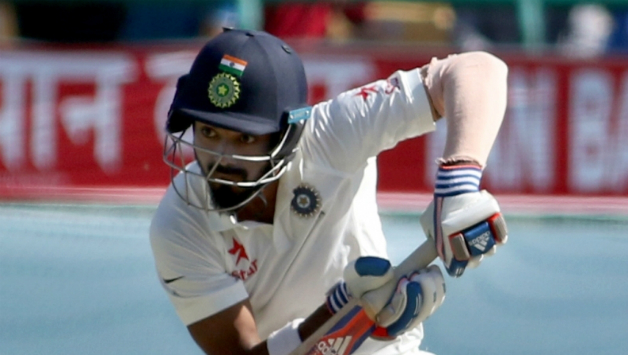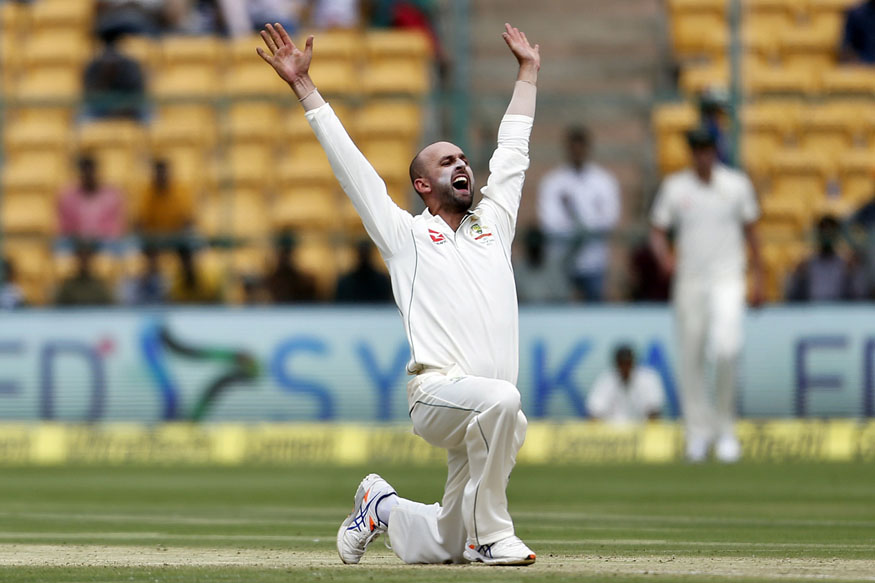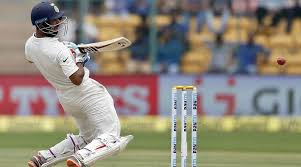
( picture from cricketcountry.com)
On 26/3/17 the second day of the fourth test match between India and Australia at Dharamsala: Post lunch session- Opener K.L.Rahul who played with a lots of patience and responsibility since play began in the morning was batting on 60 and facing up to Pat Cummins, who was bowling a spell that was hostile, intimidating and fast with speeds of over 145. In that over after every ball, Pat Cummins muttered something to Rahul: the first time Rahul ignored it: the second time he stared back and nodded his head in dissent. The next ball was bounced: Rahul instead of allowing the ball to go past him decided to slog it over mid-on but ended up giving a simple catch to mid-off. Rahul even in his wildest dreams would not play such a rash shot. All the good work was undone with one shot. It was a simple case of rush of blood, lapse of concentration, and momentary brain fade. What led to this? Obviously, it was Pat Cummins mental mockery. In the end it was Pat who had the last laugh and Rahul was forced to leave dejected and defeated. Pat forced Rahul in to mental disintegration coaxing him to play a reckless shot. In fact, Rahul tried to give-it- back- to- Pat Cummins by playing an aggressive shot- which was the wrong thing to do.
A sporting contest normally is an execution of different skills to get the better of your opponents to gain supremacy over the other. But, when things are not going their way: it has been a customary practice with the players to play mental games to regain control of the proceedings. In cricket, players indulge in verbal bashing commonly known as sledging– especially on the batsman in order to irritate, provoke and intimidate. The result is that the batsman loses concentration- internally, by his own frustrating & irritating thoughts and externally, by all the drama that is going on around him.
Mind games are not restricted to cricket alone: we have seen it happen in Tennis, where players like John McEnroe and Jimmy Connors were infamous for using negative tactics to win matches. Whenever the opponent was holding the upper hand they held up matches-by picking up fights with spectators, protesting against linesman, referee or officials. In the melee the hapless opponents waiting for the game to restart would get irritated and frustrated and by the time the game started they would have lost their concentration and rhythm. Ultimately, fortunes would change and they would end up losing the match. Time wasting, irritating habits, verbal abuse, negative body language are also some of the mind games players’ play to fox their opponents in to submission. Sachin Tendulkar and Rahul Dravid were not two batsmen who let sledging get in to their mind nor did they react negatively to the abettors with all the drama happening around them.
How to deal with mental mockery?
- The best thing would be to ignore and look elsewhere.
- Do not look directly in to the eyes of the person engaged in sledging.
- When sledging is happening around you, focus on something different like the pitch, the stumps, and the greenery of the turf around you. If you are playing a game like tennis- look around to spot something of a particular color like green, blue, white or yellow OR look at the strings of your racquet
- Take it with a smile and treat it just as another banter- with the guys trying to break your mind with their antics. The more you take it seriously the more stressed you are going to be. Change your thoughts to positive and focus on what is important at that point of time. Try to maintain your composure even under severe provocation.
- Hum your favorite tune or focus on your breathing to take away your mind from all the distractions.
- Mental preparedness using the above mantras is the key to handle mental mockery. You know you’ll be sledged – be prepared for it.
M N Viswanath, author of Success Mantra In Sports and sports performance coach, he can be reached at viswanath.author@gmail.com
The book Success Mantra In Sports is available on Amazon and flipkart. To book your copy you can click here, amazon
You can also follow at

